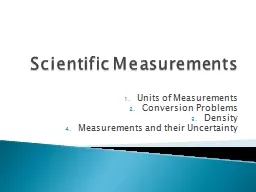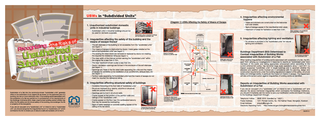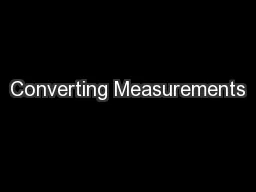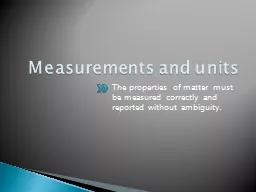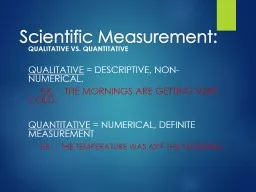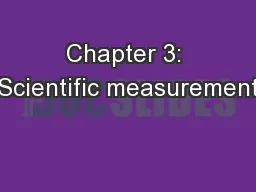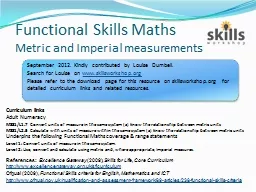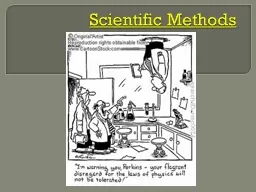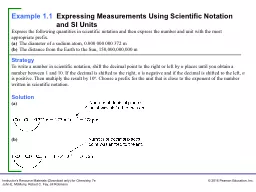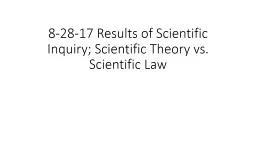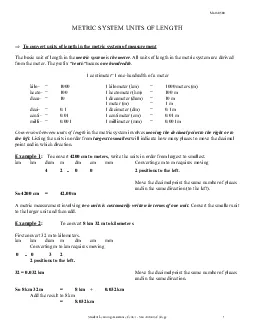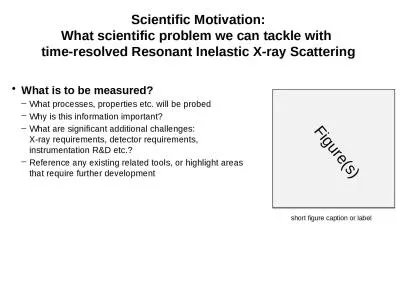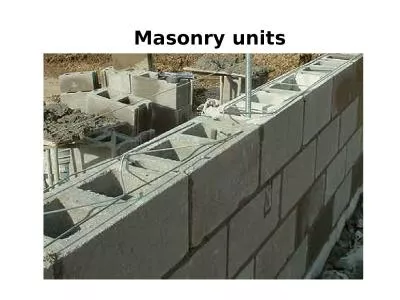PPT-Scientific Measurements Units of Measurements
Author : alida-meadow | Published Date : 2018-09-21
Conversion Problems Density Measurements and their Uncertainty Do any of these signs list a measurement Measurements contain BOTH a number and a unit All measurements
Presentation Embed Code
Download Presentation
Download Presentation The PPT/PDF document "Scientific Measurements Units of Measure..." is the property of its rightful owner. Permission is granted to download and print the materials on this website for personal, non-commercial use only, and to display it on your personal computer provided you do not modify the materials and that you retain all copyright notices contained in the materials. By downloading content from our website, you accept the terms of this agreement.
Scientific Measurements Units of Measurements: Transcript
Download Rules Of Document
"Scientific Measurements Units of Measurements"The content belongs to its owner. You may download and print it for personal use, without modification, and keep all copyright notices. By downloading, you agree to these terms.
Related Documents

